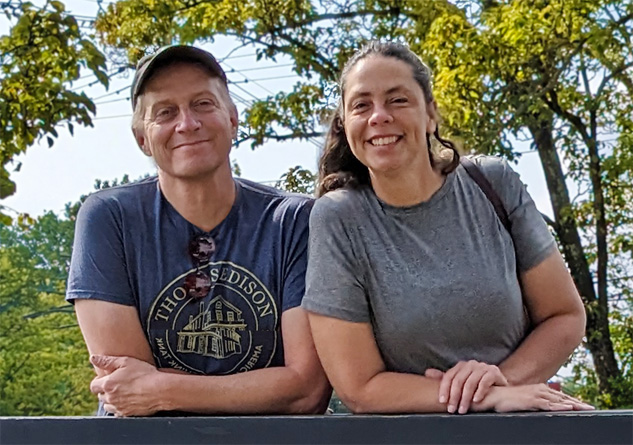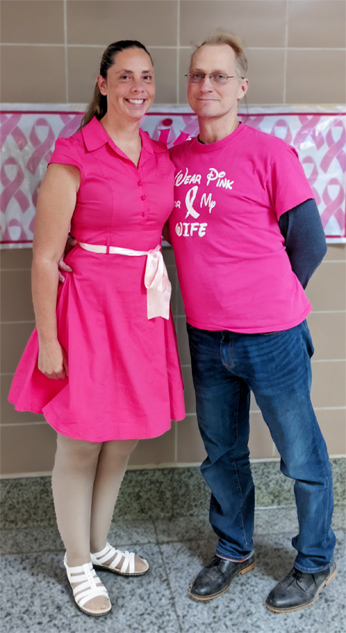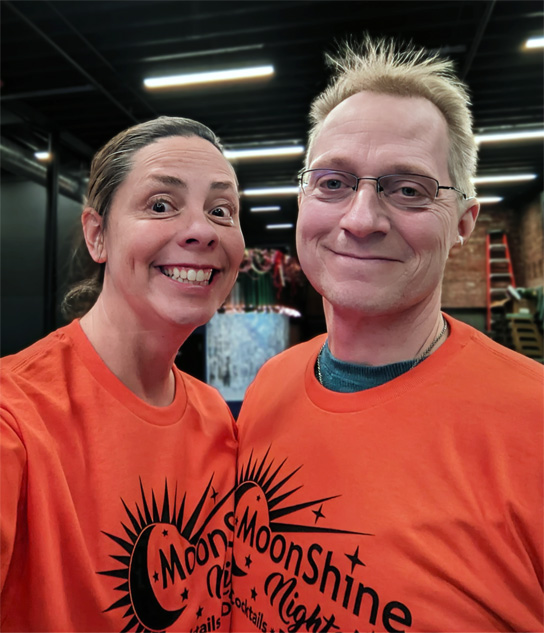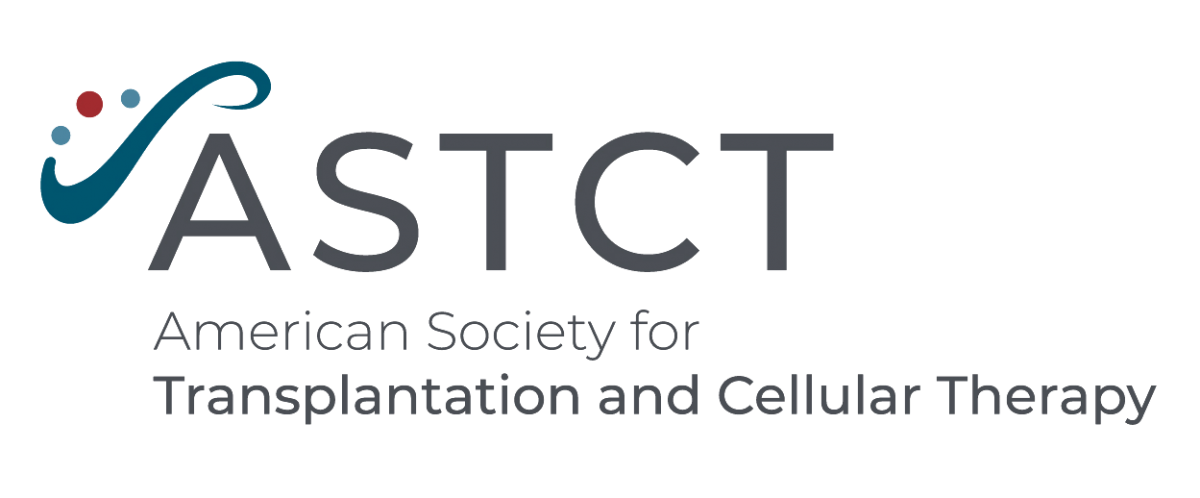Jon Stawowy
Fremont, Ohio
Non-Hodgkin Lymphoma
Transplanted in 2021
Many thanks to the American Society for Transplantation and Cellular Therapy for helping us share Jon and Julie's story.

In the midst of November, as National Caregivers Month is celebrated, it is a time to acknowledge the profound impact of caregivers. This short story is a testament to the strength and unwavering love between a husband and wife.
I want to tell you a story about my wife, Julie. She is a breast cancer survivor. She endured invasive operations, including a double mastectomy and a hysterectomy. She had a long and painful recovery. I was honored to be her caregiver during this time. I changed the dressings, cleaned her wounds, and assured her that I found her just as beautiful now as before her surgeries. While I can relate to physical injuries, as a man, I don't think I can completely understand the mental injuries inflicted on her.
After one year, she was cancer-free and healing physically. She had regained her physical strength and endured reconstruction surgery very well.
 Very soon after we celebrated her one year as a survivor, I was diagnosed with Non-Hodgkin Lymphoma/Peripheral T-Cell. Our celebration was short-lived, as I quickly went into a very aggressive chemotherapy regimen. Now, I needed a caretaker, as the chemotherapy I was on had very intense side effects. The caregiver has become the care receiver.
Very soon after we celebrated her one year as a survivor, I was diagnosed with Non-Hodgkin Lymphoma/Peripheral T-Cell. Our celebration was short-lived, as I quickly went into a very aggressive chemotherapy regimen. Now, I needed a caretaker, as the chemotherapy I was on had very intense side effects. The caregiver has become the care receiver. Another year passed, and I entered remission and began recovery. For 12 months, my wife Julie and I have avoided the shadow of cancer, but it was not finished with us yet. I began to suffer from lung graft-versus-host disease (GVHD). For months, we tried treatment with no success. I was eventually admitted to the ICU.
The ICU is a place filled with horrible things and wonderful people. As my condition worsened, my family was called to my bedside. Due to Covid-19 rules, each family member was given 5 minutes to say goodbye to me. I was not expected to live until morning. Julie refused to leave my bedside and had to be escorted out of the ICU.
I think back quite often on this night. The night that was supposed to be my last. I knew how I felt physically, and it was pretty bad. However, mentally, I felt fine. I was clear-headed and understood what was going on. So, sitting in the dark, with all the sounds of machines and buzzes of a busy ICU, I made a decision. I turned on the T.V. and literally crawled into the chair my wife Julie would use when she sat with me.
The reluctance to fall asleep is not surprising if you know it is the last time. After arguing with the nurses, they left me alone. And, in what seemed like just a few minutes, the sun came up, and I got to see the smile on my wife's face when she entered my little curtained solitary confinement. I made it through the night.
Soon afterward, I was transferred upstairs to the BMT Transplant floor. I made a prolonged recovery, and when I was finally released to go home, I could not breathe on my own. I could not swallow food, walk, and generally do the most basic tasks. My wife, once again, wore the crown of caregiver for me.
Even though I had lost almost 70 pounds and looked like a living skeleton, she proudly cared for me in every way. My recovery took months, and she never once complained. My wife, Julie, saved my life.
Two years have passed, and I am just about back to normal. I am still in remission and can manage my GVHD. So, it would seem appropriate that I, unfortunately, was being called on again to be a caregiver. 

My wife's cancer is back, and we are just beginning this next chapter in our war with cancer. This story's purpose is to testify that everyone has what it takes to be a caregiver. No matter where I am in my recovery, I am ready to be a caregiver to Julie. No matter where she is in her recovery, she is prepared to be my caretaker. Cancer, whether through the tendrils of the disease itself or the numerous side effects of treatment, did whatever it could to drive me and my wife apart. However, I have learned through giving care and the humbling experience of receiving care my wife and I are closer than ever. I find her more beautiful than ever, and I am confident I will be adding another chapter to this story in the near future.

The American Society for Transplantation and Cellular Therapy (ASTCT), formerly known as the American Society for Blood and Marrow Transplantation, is a professional society of more than 2,200 healthcare professionals and scientists from over 45 countries who are dedicated to improving the application and success of blood and marrow transplantation and related cellular therapies. ASTCT strives to be the leading organization promoting research, education, and clinical practice to deliver the best, comprehensive patient care.
English